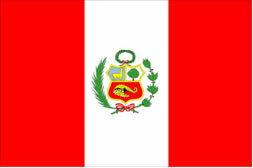In the 1970s, four countries in Asia (Singapore, Hong Kong, South Korea and Taiwan) experienced an accelerated industrialization process. Due to the administrative aggressiveness and location of the countries, they became known worldwide as Asian tigers.
The industrial model of these countries is characterized as IOE (Export-Oriented Industrialization), that is, the industries transnational corporations that have established themselves in these countries and local companies have implemented an industrial park aimed mainly at the market. outside.

Singapore
Singapore, Hong Kong, South Korea and Taiwan used different methods for economic development, however, these nations showed common aspects, such as strong support from the government, providing necessary infrastructure (transport, communications and energy), financing of industrial facilities and high investments in education and training professional.
Furthermore, these countries (except South Korea) have adopted an incentive policy to attract transnational industries. Export Processing Zones (ZPE) were created, with land donations and tax exemption by the State.
Unlike other Asian Tigers, South Korea has shown resistance to the installation of transnational corporations on its territory. The country's industrial development was based on chaebols, which are characterized by networks of companies with strong family ties. Four large chaebols control the Korean economy and have a strong presence in the international market: Hyunday, Daewoo, Samsung and Lucky Gold Star.
It was only in the 1980s that transnationals began to enter South Korea, however they are associated with Korean companies.
The New Asian Tigers
As a result of the great economic development of the Asian Tigers, there was an expansion into the countries neighbors to the southeast, which led to a process of industrialization in Indonesia, Vietnam, Malaysia, Thailand and Philippines. In addition to the investments of the original four Tigers, the new Tigers became part of the business networks of companies in the United States, Japan and other developed countries.
In these new Tigers, traditional industries were installed, such as textiles, shoes, food, toys and electronic products. In these countries there is less qualified labor than that found in the original four Tigers, but much cheaper. Thousands of small companies produce bespoke goods, created and planned in other countries around the world.
Do not stop now... There's more after the advertising ;)
By Wagner de Cerqueira and Francisco
Graduated in Geography
Would you like to reference this text in a school or academic work? Look:
FRANCISCO, Wagner de Cerqueira e. "Asian tigers"; Brazil School. Available in: https://brasilescola.uol.com.br/geografia/tigres-asiaticos.htm. Accessed on June 27, 2021.



